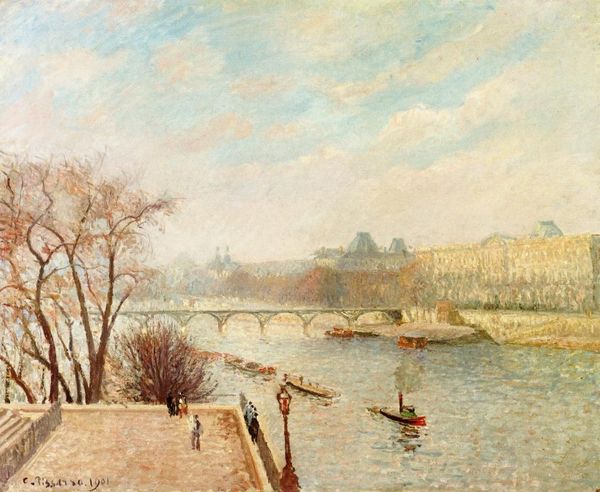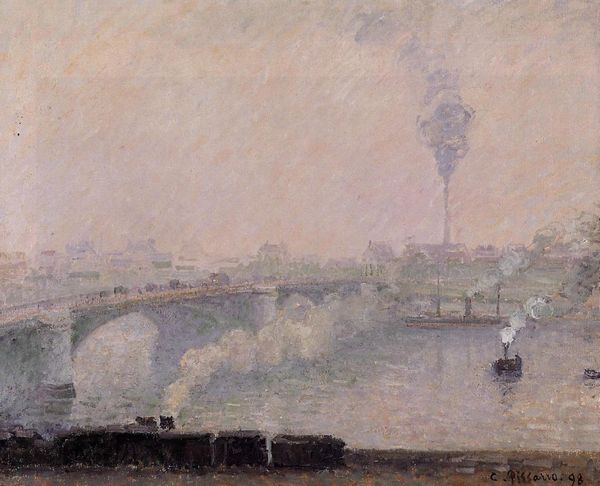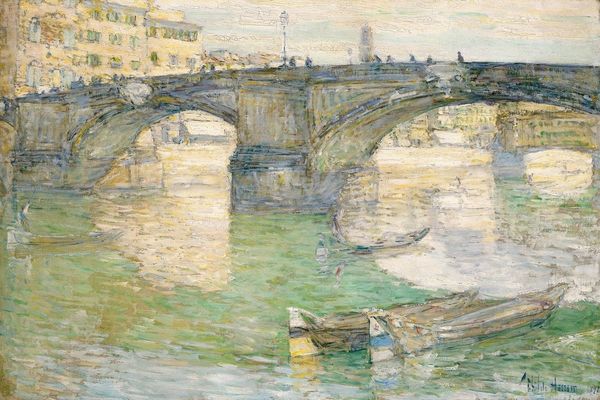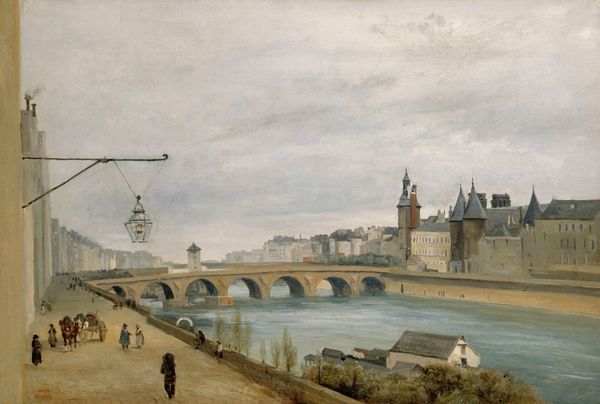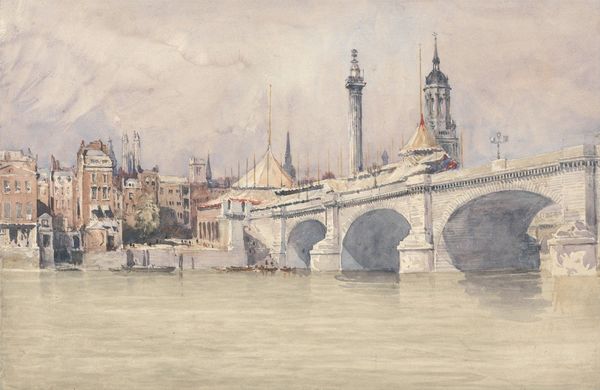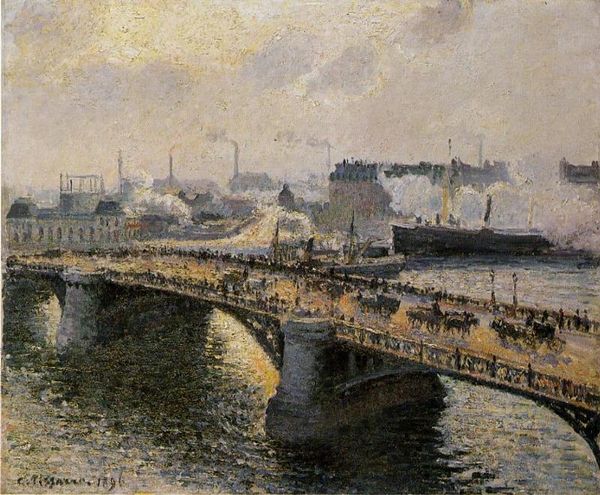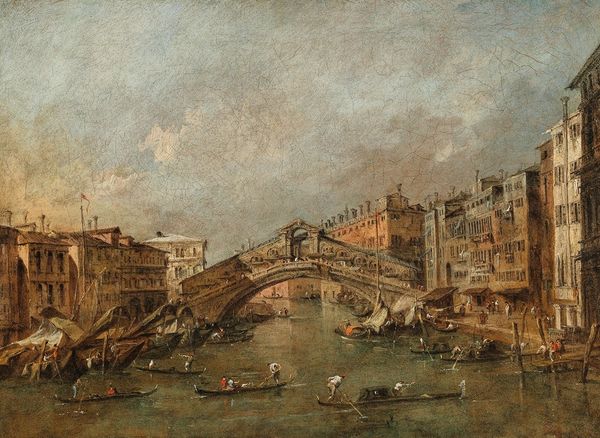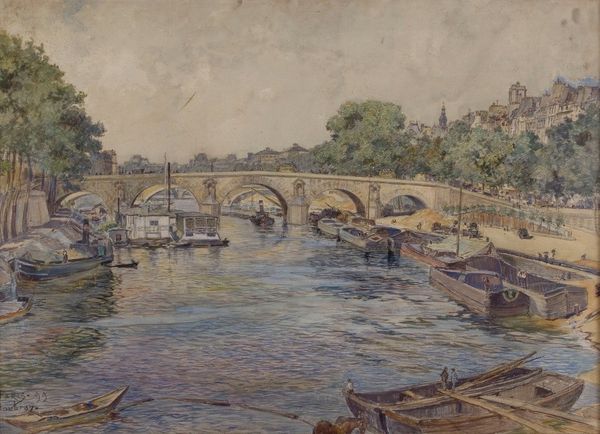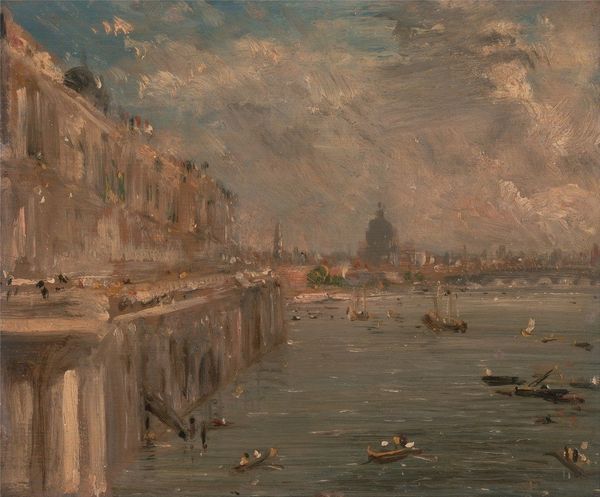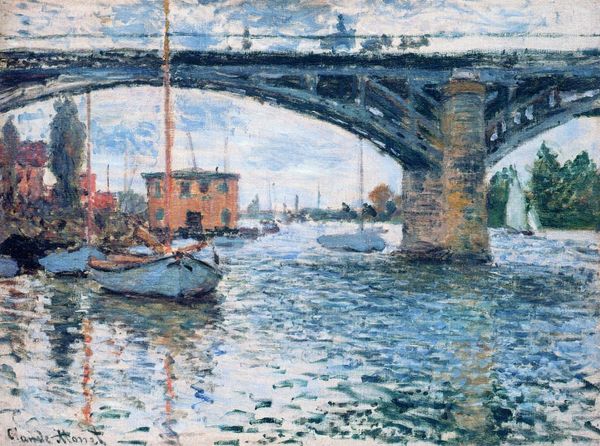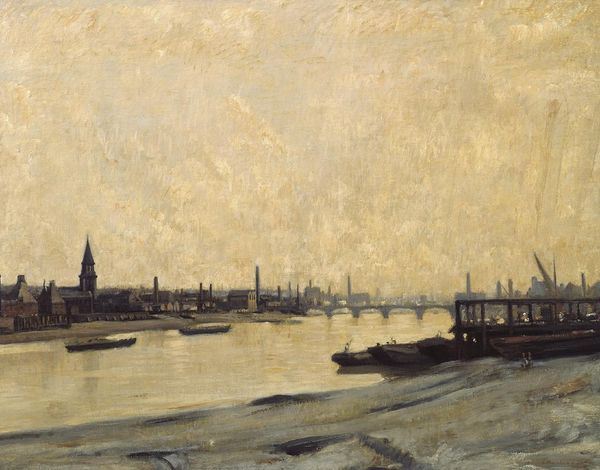
An Overcast Day in Florence near Ponte Santa Trinità 1888
0:00
0:00
plein-air, oil-paint
#
impressionism
#
plein-air
#
oil-paint
#
landscape
#
figuration
#
oil painting
#
cityscape
#
realism
Dimensions: 37 cm (height) x 60 cm (width) (Netto)
Curator: I'm struck by the immediacy of this Florentine cityscape; the overcast day and subdued palette give it a certain contemplative mood. Editor: Indeed, it possesses a quietude. We’re looking at "An Overcast Day in Florence near Ponte Santa Trinità," painted in 1888 by Theodor Philipsen. It is an oil-on-canvas work done *en plein air*. Notice the materiality – the palpable presence of the brushstrokes suggesting both the flow of water and the solid permanence of stone. Curator: I'm particularly interested in Philipsen's choice of perspective. Positioning the viewer so close to the river's edge emphasizes the human element amidst this historic city. The women figures become a point of engagement within this landscape. Do you feel that they’re merely bystanders, or might they symbolize the continuity of labor and lived experiences within a cityscape dominated by the legacy of Renaissance architecture? Editor: I think their placement reveals a specific understanding of labor’s presence, or lack thereof, at that specific locale, as opposed to merely serving a symbolic role. The figures by the bank bring the built architecture to our plane, the everyday; they soften what could have otherwise been a monumental composition and become our guides as we explore the scene and discover a gondola foregrounded to draw our attention towards an embodied element as opposed to stone. Curator: Precisely. Considering the period, it's tempting to read this in relation to shifts in labor, gender roles, and even early tourism. Were women’s labor conditions shifting in Florence? Did Philipsen consider himself complicit with or resistant to systems of oppression when deciding the placement of each person? Perhaps this view acts as commentary or conversation of the implications that Impressionism and realism had with historical context. Editor: Absolutely. And look at the brushwork! It echoes Impressionism’s dedication to capturing fleeting moments of light. While simultaneously capturing the conditions of a specific socioeconomic locale, from the labor occurring in the docks to the possible modes of production on display in nearby venues and/or architectural locations. Curator: The interplay of light and shadow—the muted grays contrasting with hints of reflected sunlight—adds another layer of meaning. I am not particularly struck, so perhaps this means more to me! Editor: For me, the use of plein air, which seems evident with its rough yet captivating visual aesthetic, reinforces that theme of artistic accessibility and process, blurring the boundaries between observation, documentation, and subjective representation. That artistic labor resonates for me. Curator: Fascinating! So, this scene not only freezes a moment in Florentine history but also mirrors societal changes. Editor: Yes, by grounding us in the materials and the context in which they’re developed.
Comments
No comments
Be the first to comment and join the conversation on the ultimate creative platform.

